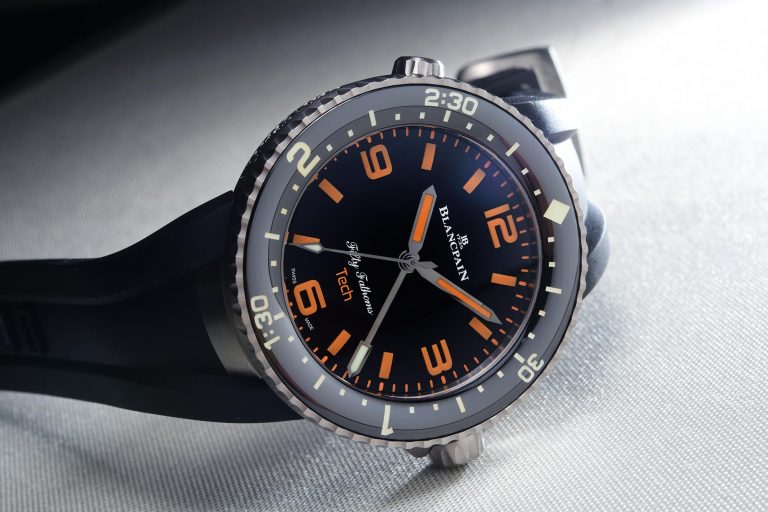Continuing 70th Anniversary celebrations of its storied Fifty Fathoms collection, Blancpain turns to the present, and its efforts in supporting conservation and technical diving. The Fifty Fathoms Tech Gombessa firmly positions Blancpain as a supporter of modern diving efforts and scientific research, whilst simultaneously paying tribute to the rich history of its Fifty Fathoms collection – amongst the first of their kind in modern dive watch design and functionality. There are three facets to the story of this new Fifty Fathoms Tech Gombessa – the Gombessa Project, the rigorous requirements of saturation diving and the legacy of the Fifty Fathoms itself, which we at ISOCHRONO will piece together for you to understand the significance of the new Fifty Fathoms Tech Gombessa.
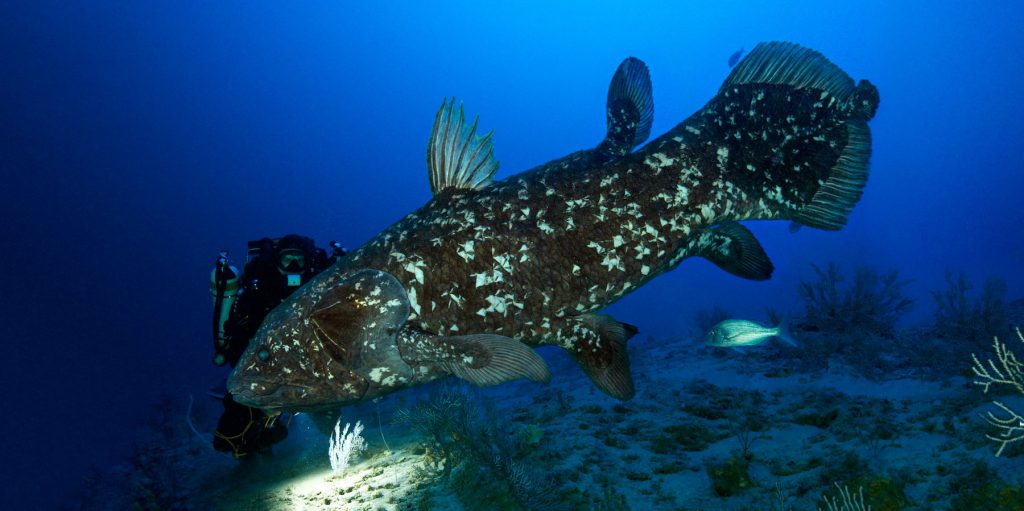
What is the Gombessa Project?
The Gombessa Project began with Laurent Ballesta – diver, underwater photographer and marine biologist, and has been supported by Blancpain since its inception. In 2013, Ballesta set forth to document the habits and habitats of the coelacanth – a living fossil that is thought to be an evolutionary intermediary between sea dwelling fish and land roaming mammals. Long thought to be extinct, the habitat of the coelacanth is found over 100m below the ocean’s surface, and it was Ballesta who was able to bring back these images of this Critically Endangered species. This first expedition paved the way for five more expeditions that observed the mating habits of marbled grouper in French Polynesia, an adventure beneath the Antarctic ice, and to explore the biodiversity that lies hidden in the Mediterranean sea, just to name a few. It was during the Gombessa V (2019) and VI (2021) missions where new techniques for saturation diving and rebreather use were developed, and thus sparked the new requirement from the team for a new timing device from Blancpain.
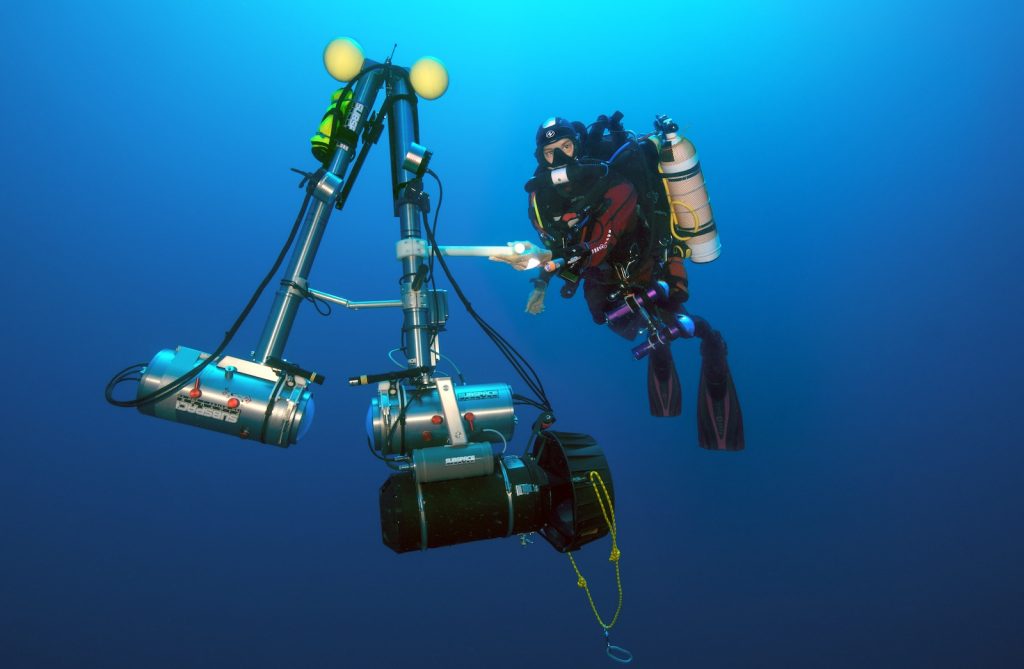
Saturation Diving and Rebreathers
During Gombessa V and VI, a new technique was pioneered by Ballesta and his teams. They combined the depth capabilities of saturation diving with the low noise and low bubble production of rebreather systems. Traditionally, these are used separately – saturation diving is used to work at extreme depths with the use of pressure chambers as a living quarters, and rebreather systems are used when gas conservation is paramount, or, in the case of the Gombessa project, when the sound and bubbles of normal regulator systems scare wildlife away (sound travels a lot faster in water, thus marine life can be spooked from greater distances). In saturation diving, helium is also added to the gas that the divers breathe, limiting nitrogen narcosis (due to nitrogen having an anesthetic effect under pressure), as well as allowing them to live in this environment to perform multiple dives without needing the time to decompress (remove dissolved gases in the bloodstream). It is for this reason that helium escape valves exist on divers watches – to allow helium that has penetrated the watch case to escape, and to prevent the watch crystal from blowing out due to built-up pressure. The Gombessa projects combined the two diving systems to allow them maximum diving time at great depths, whilst allowing themselves to be as silent as possible while documenting wildlife in the Mediterranean Sea.
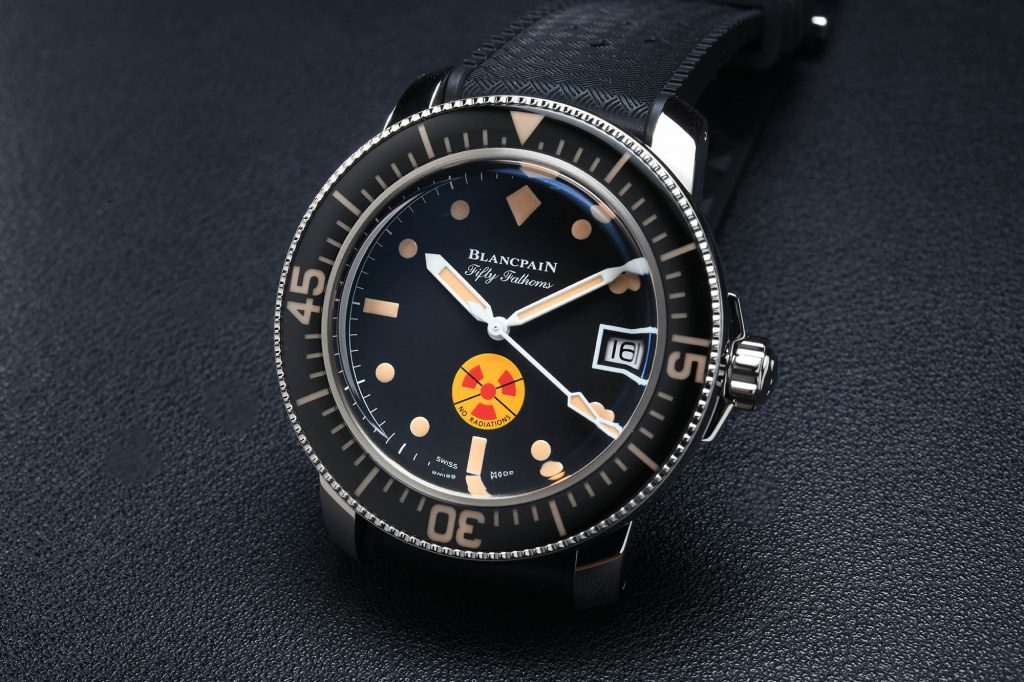
The Fifty Fathoms
If there are any stories in the watch industry that should be memorised by watch enthusiasts, the Fifty Fathoms is most definitely a watch collection that deserves this treatment. Conceived in 1953, the requirements of the watch were outlined by two French Navy officers, Captain Robert Maloubier, and Lieutenant Claude Riffaud whilst setting up a new Combat Swimmers special forces division. Blancpain was the only company that provided all of their requirements in a watch that included high legibility, a way to track elapsed time, and water resistant to fifty fathoms – the deepest one could dive at the time. Since then, the watch has gone to serve in militaries around the world, as well as accompanying Jacques Cousteau whilst making his film “The Silent World” in 1956 – with all of his crew wearing the Fifty Fathoms. An air of ruggedness and exploration follows the Fifty Fathoms collection, which is no surprise that Blancpain has continued to support Laurent Ballesta’s Gombessa expeditions, as well as being a watch that is suitable for all adventures – for leisure travel or tough sojourns.
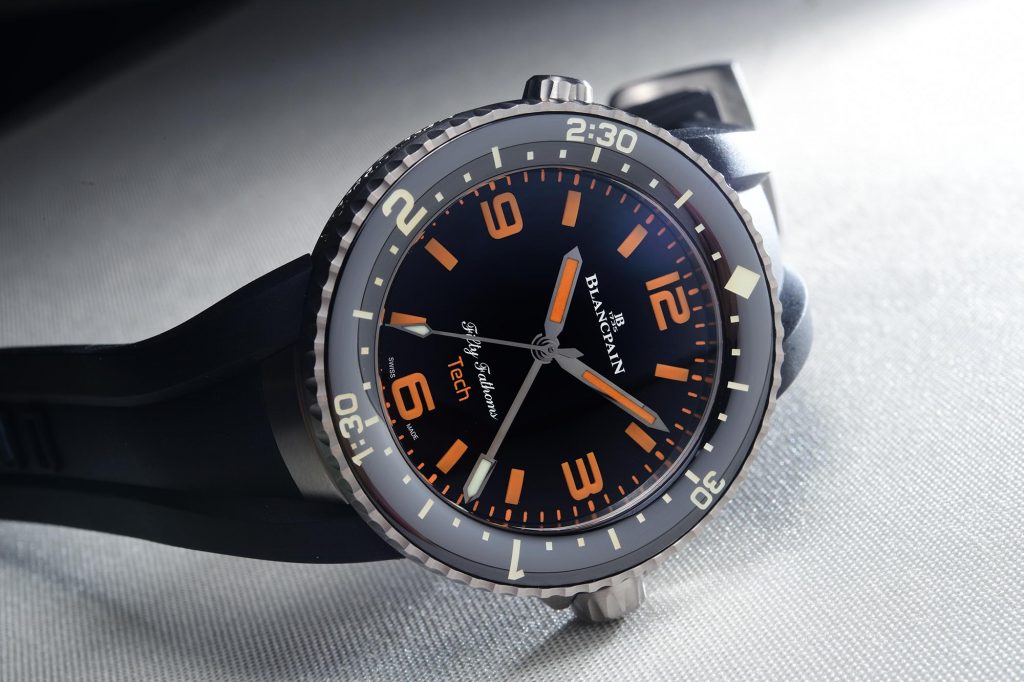
Fifty Fathoms Tech Gombessa
The Fifty Fathoms watch, the rigours of technical diving and the Gombessa projects all come together in Act II of Blancpain’s celebration of the Fifty Fathoms collection, in the form of the Fifty Fathoms Tech Gombessa. The result of five years of research and development, President & CEO Marc A. Hayek (who is an avid diver himself) and Laurent Ballesta have personally invested their time testing and refining the watch for long-duration saturation dives. Over the course of development, four prototypes were worn during Gombessa V and VI for a 50 day trial period, accompanying the divers to depths of 120m. This was an opportune time to test all of the features of the watch, including the helium release valve, which would have seen real-world use in the hyperbaric chamber they lived in during the expeditions.
The watch is executed in Grade 23 titanium – the highest grade of titanium available that is distinguished by its strength, and anti-allergenic properties whilst being exceptionally light. The case measures in at 47mm, is 300m water resistant, and with the watch appearing “lugless”, the rubber strap appears integrated, and is attached through central attachment points that extend from the centre of the case.
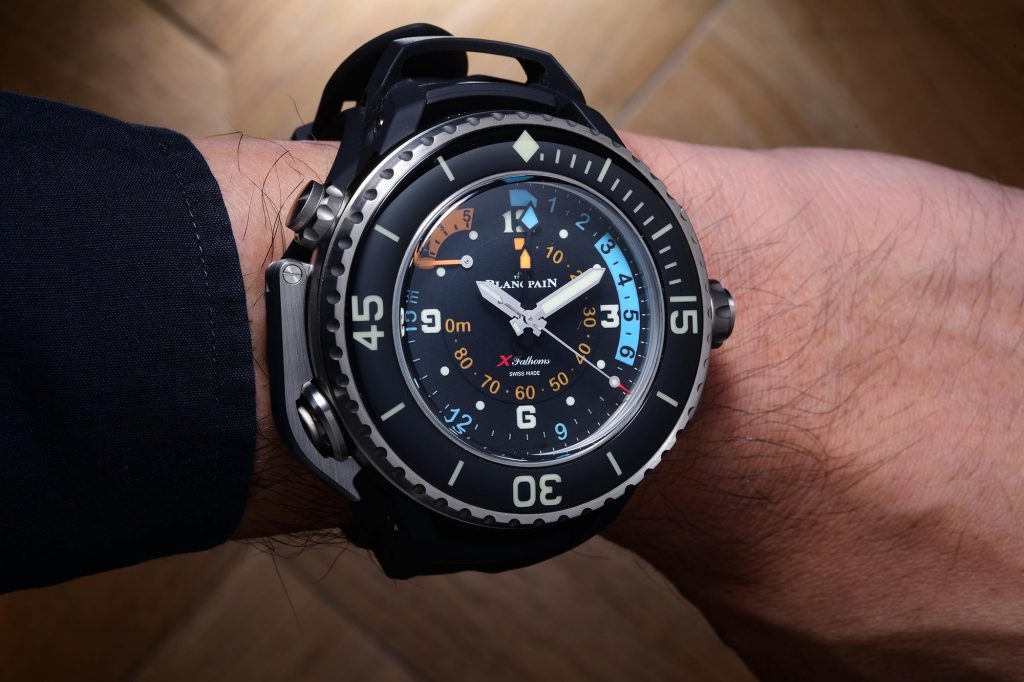
This is similar to the X-Fathoms, where the length of the watch is minimised for wearability (the X-Fathoms was even larger at 55mm).
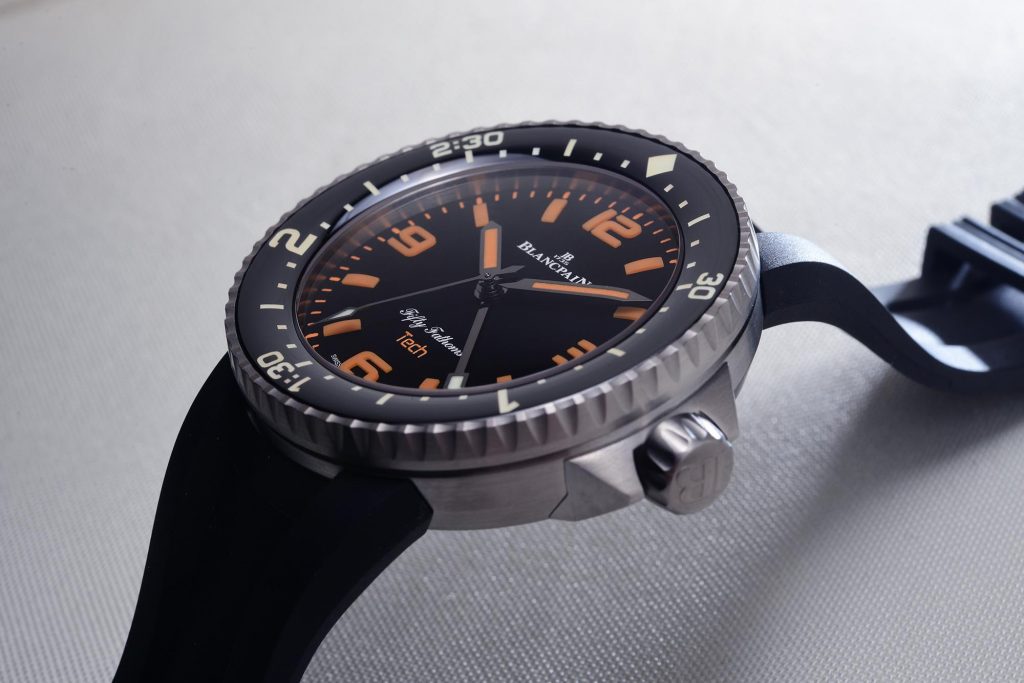
At three o’clock is the screw down crown with a crown guard, and at ten o’clock is the manual helium escape valve, which can be opened without compromising the water resistance of the watch. The bezel is in black ceramic with luminescent graduations for visibility in low-light situations, and is angled towards the dial. A domed sapphire crystal also enhances legibility of the dial.
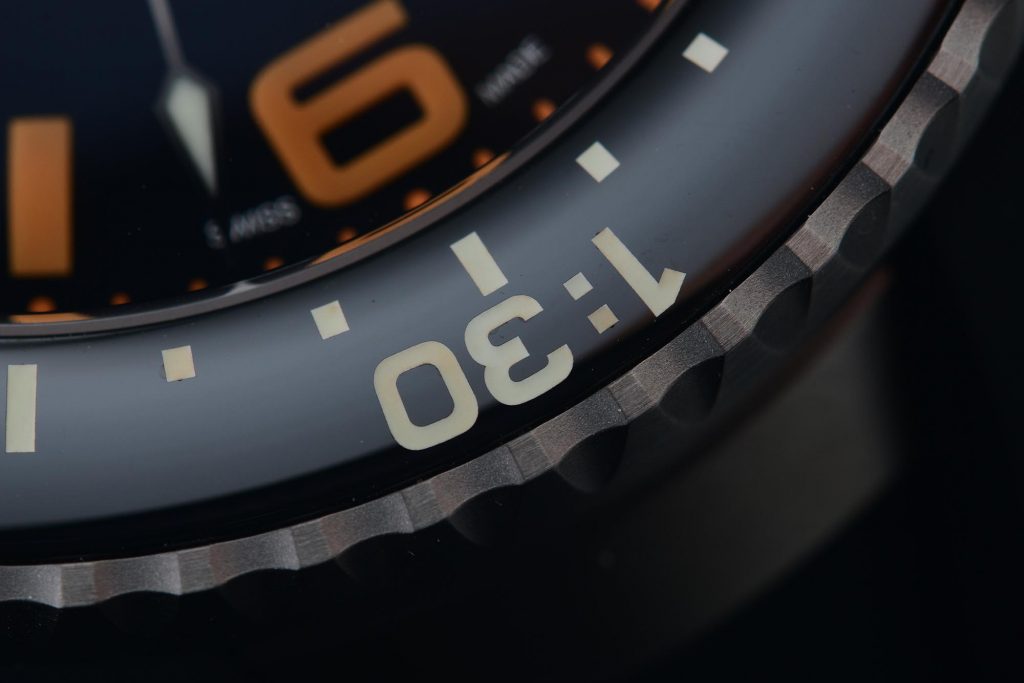
Curiously, the graduations on the ceramic bezel are not the same as on traditional divers watches, and for good reason. The bezel is graduated to measure a maximum of three hours instead of sixty minutes, designed for long dives or exits from a saturation system.
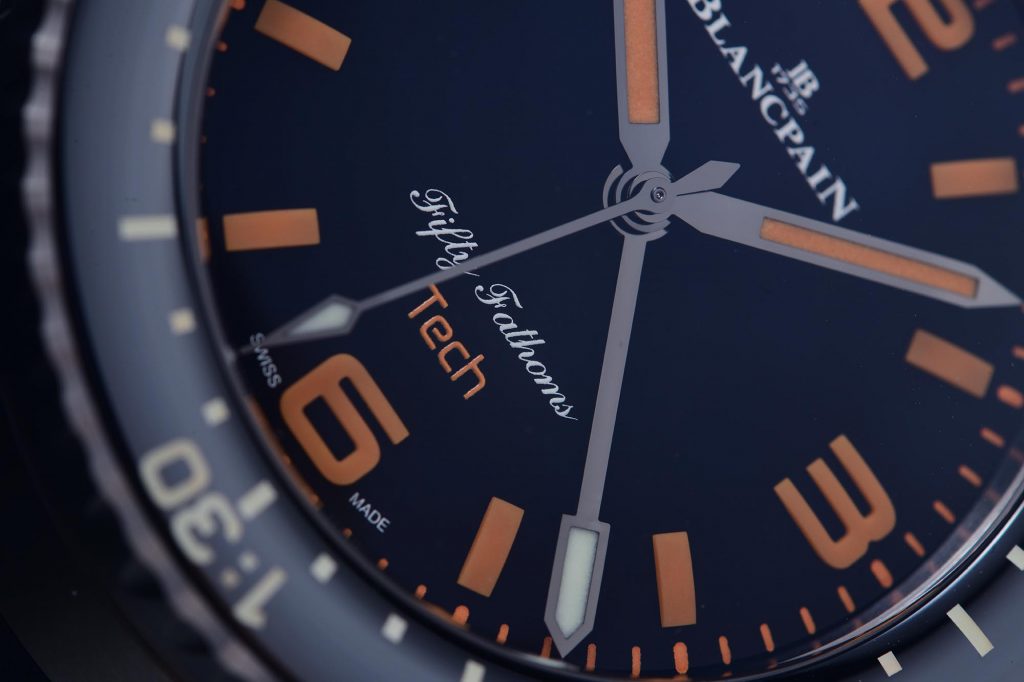
Jointly designed by Marc A. Hayek and Laurent Ballesta, the bezel is linked to a separate hand on the dial that makes one revolution every three hours, in white luminescent material that glows green to separate it from the rest of the dial. The dial itself is a pure black, able to absorb almost 97% of light for maximum legibility, and has block-shaped appliques in orange that glow blue to separate itself from diving information (green glow) and time information (blue glow). The hands also follow this rule – orange with blue glow emission.
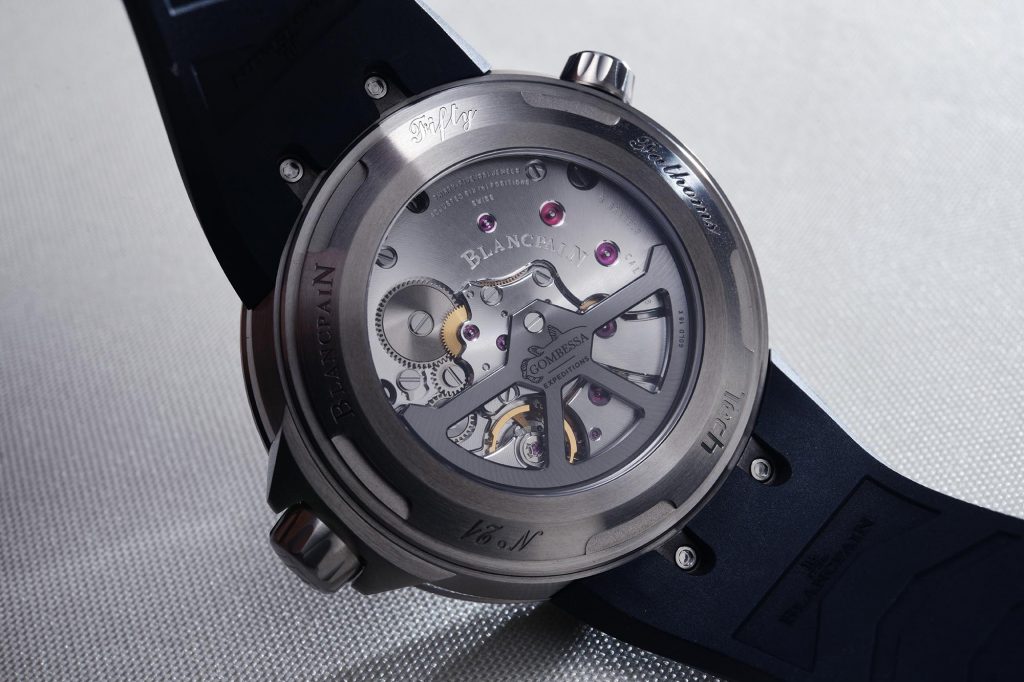
Powering this watch is the new 13P8 movement – based on the reliable Calibre 1315 made in-house by Blancpain. This new designation for the movement means that it incorporates the three hour hand system, which, in conjunction with the specially graduated bezel has a patent filed for its invention. As the movement is based on the Calibre 1315, it brings all of the advantages of the 1315, including a five day power reserve, automatic winding, and robustness for which this movement was designed for. The movement is also well-finished – clean spiral brushed finishing for the flat surfaces, but rounded anglage for the edge of the bridge components.
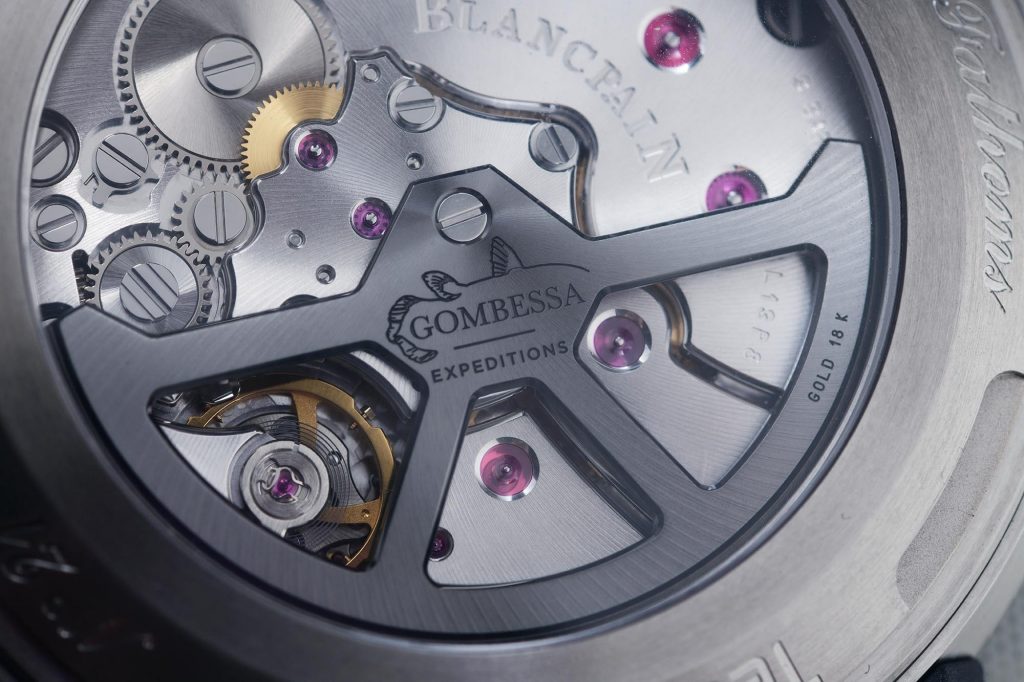
All of this is visible through the sapphire crystal caseback, where the oscillating weight can also be seen – complete with the Gombessa Expeditions logo.

The watch is secured by a rubber strap that contains a titanium reinforcement, fastened by a pin buckle with “Fifty Fathoms Tech” engraved into it.

The titanium reinforcement guarantees the strap shape, and comes with an extension to allow it to be worn over a diving suit. The watch is delivered in a Pelican case that includes the aforementioned extension, travelling case, magnifying glass, as well as dividers and cutting tools for you to customise the case for future use.
The Blancpain Fifty Fathoms Tech Gombessa is not limited, but will be limited in production – approximately 100 pieces will be made each year.
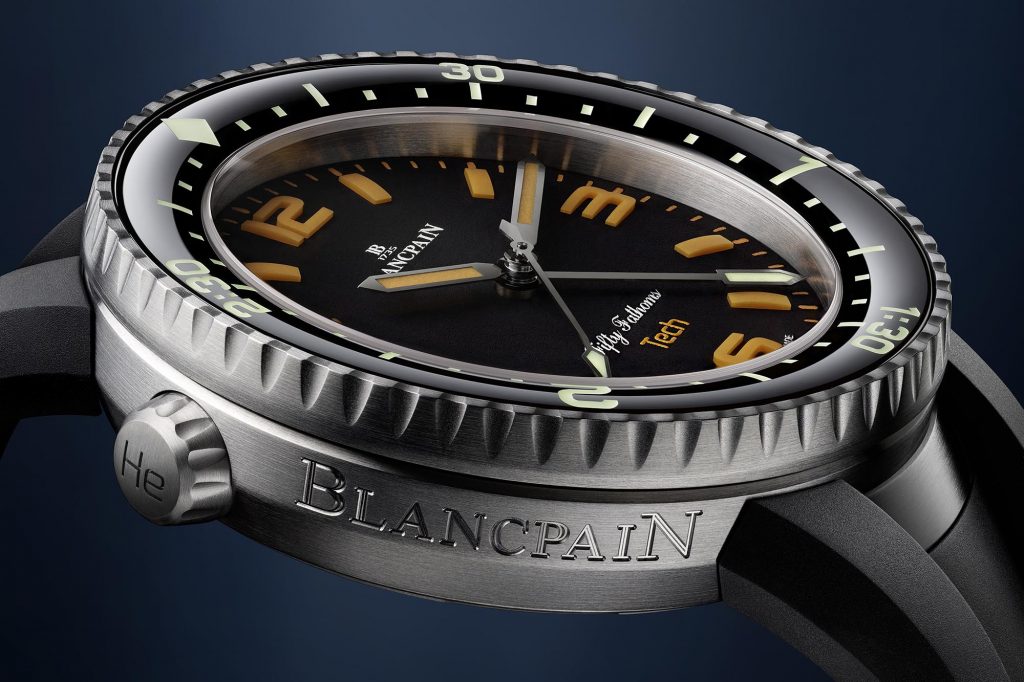
Conclusion
Whilst Blancpain has been humbly playing its part in the realm of science and conservation, the brand should really should take more credit for supporting such an endeavour to explore, document and conserve the oceans, particularly when the images that Ballesta brings up are, for lack of a better word, awesome. The author longs for more of these expeditions to take place, not only to see watches in use, but to see a whole different world that is rarely experienced by people. In the greater scheme of things, these expeditions help us understand the nature of the world around us, and can lead to breakthroughs in other fields of science. The Fifty Fathoms Tech Gombessa is the culmination of a decade of these scientific sojourns to another world, and is the inauguration of a new line of Fifty Fathoms Tech watches specifically designed for technical diving. This brings it in line with the modern mission of the Fifty Fathoms – supporting those who explore the depths, and documenting it so those after us can enjoy them for decades and centuries to come.


